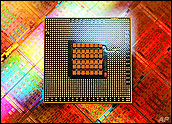
Scientists in Europe have created a robotic salamander that uses an amphibian type central nervous system to switch from swimming to walking as it crawls onto land out of water.
The “Salamandra Robotica,” built by the Biologically Inspired Robotics Group (BIRG) at Ecole Polytechnique Federale (EPFL) in Lausanne, Switzerland, is a groundbreaking creation, said the scientists involved in the project.
“To the best of our knowledge it is the first robot that combines the three modes of locomotion — swimming, serpentine crawling and walking — in a single robot,” according to the BIRG Web site. The site features links to digital movies of the robot in action, including some showing it swimming in Lake Geneva and crawling onto the shore.
The salamander appears to be breaking new ground, Dan Kara, a robotics expert and president of Robotics Trends, told TechNewsWorld. “I don’t know of any robot out there that does all three of those modes of movement,” he said. “There are snakebots with serpentine movement. That’s common. Swimming is less common. Something that combines all three of those (walking, crawling and swimming) raises the level.”
Modifications and Mechanisms
The creators said the machine addresses three “fundamental issues” involved in vertebrate movement: “the modifications undergone by the spinal locomotor circuits during the evolutionary transition from aquatic to terrestrial locomotion, the mechanisms necessary for coordination of limb and axial movements, and the mechanisms that underlie gait transitions induced by simple electrical stimulation of the brain stem.”
Salamandra Robotica has nine yellow plastic segments and four black legs with feet. While swimming, the unit’s legs and feet do not move and the device swims like a lamprey. As it reaches land, the legs are activated and allow the robot to walk in typical salamander fashion. Each of the robot’s segments enclose a battery and a micro controller.
“This project investigates the transition from swimming to walking during vertebrate evolution,” the BIRG said.
The robot changes its speed and gait in response to simple electrical signals, noted the BIRG, “suggesting that the distributed neural system in the spinal cord holds the key to vertebrates’ complex locomotor capabilities.”
Getting Its Legs
One of the group’s prior robotic projects involved a robotic lamprey. This device was its attempt to see if the neural controllers for swimming could “be extended” to control both the swimming and walking of the salamander.
“The salamander is indeed believed to be one of the modern tetrapods closest to the first vertebrate having made the transition from aquatic to terrestrial habitats during evolution,” explained the scientists.
“Our models give insights into how the different oscillatory centers identified in the spinal cord are coupled together to produce the bi-modal salamander locomotion, and how driving signals from the upper part of the brain can modulate speed, direction, and type of gait,” they added. “The models replicate some key characteristics of salamander locomotion, in particular the production of body undulations in traveling wave mode for swimming, and in standing wave mode coordinated with limb movements for walking.”
While the robot can help scientists understand evolution, the designers noted it also shows how “nature herself” offers solutions for robot design.
Robot designers always look to nature for clues, Kara pointed out. “A lot of hard work in locomotion has already been done by nature over millions of years through evolution,” he stated. We know what works and what doesn’t work.”
Real-World Benefits
The robot serves here as a useful tool for neurobiology, said EPFL professor Auke Ijspeert. “We used the robot to show that our model actually reflects reality,” he declared. “The robot was very useful to validate that our model could effectively modulate speed, direction and gait — aspects that need a mechanical ‘body’ to be properly evaluated — and also to verify that the generated movements are close to those of a real salamander.”
The designers said the robot “may ultimately point to a way to gain better understanding of the more sophisticated circuits in the human spinal cord. If the control signals received by the spinal cord could be identified, perhaps it would be possible to re-initiate these by electrical stimulations in patients with spinal cord injuries.”
Other real-world benefits of the BIRG developments include creating robots for search and rescue situations, where the units must be able to change speed, direction and gait “based on simple remote signals” said the researchers.
The trend within the robot designer world is to make the machines increasingly autonomous and able to decide on their own how to navigate differing terrain, Kara noted.





















































